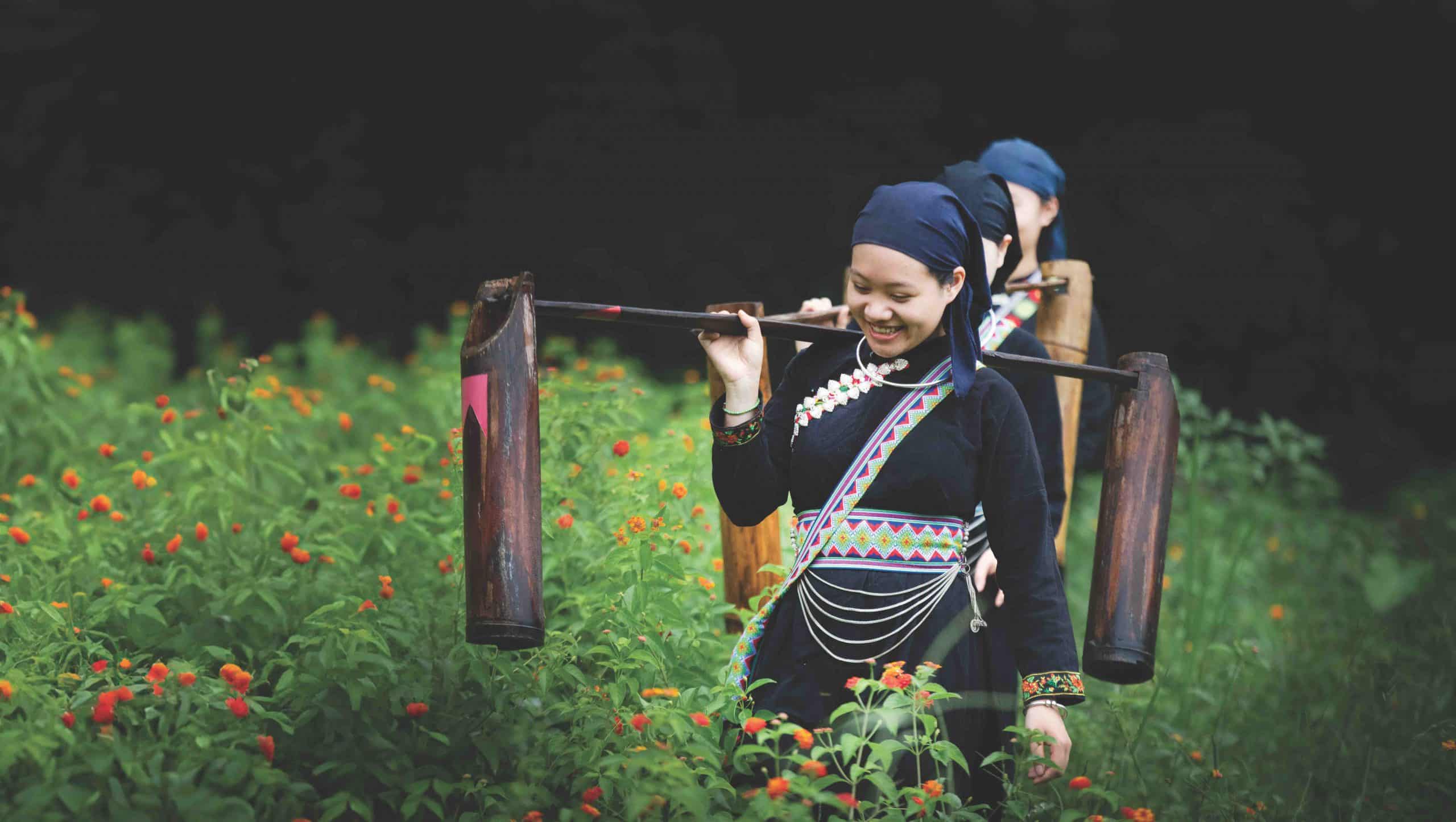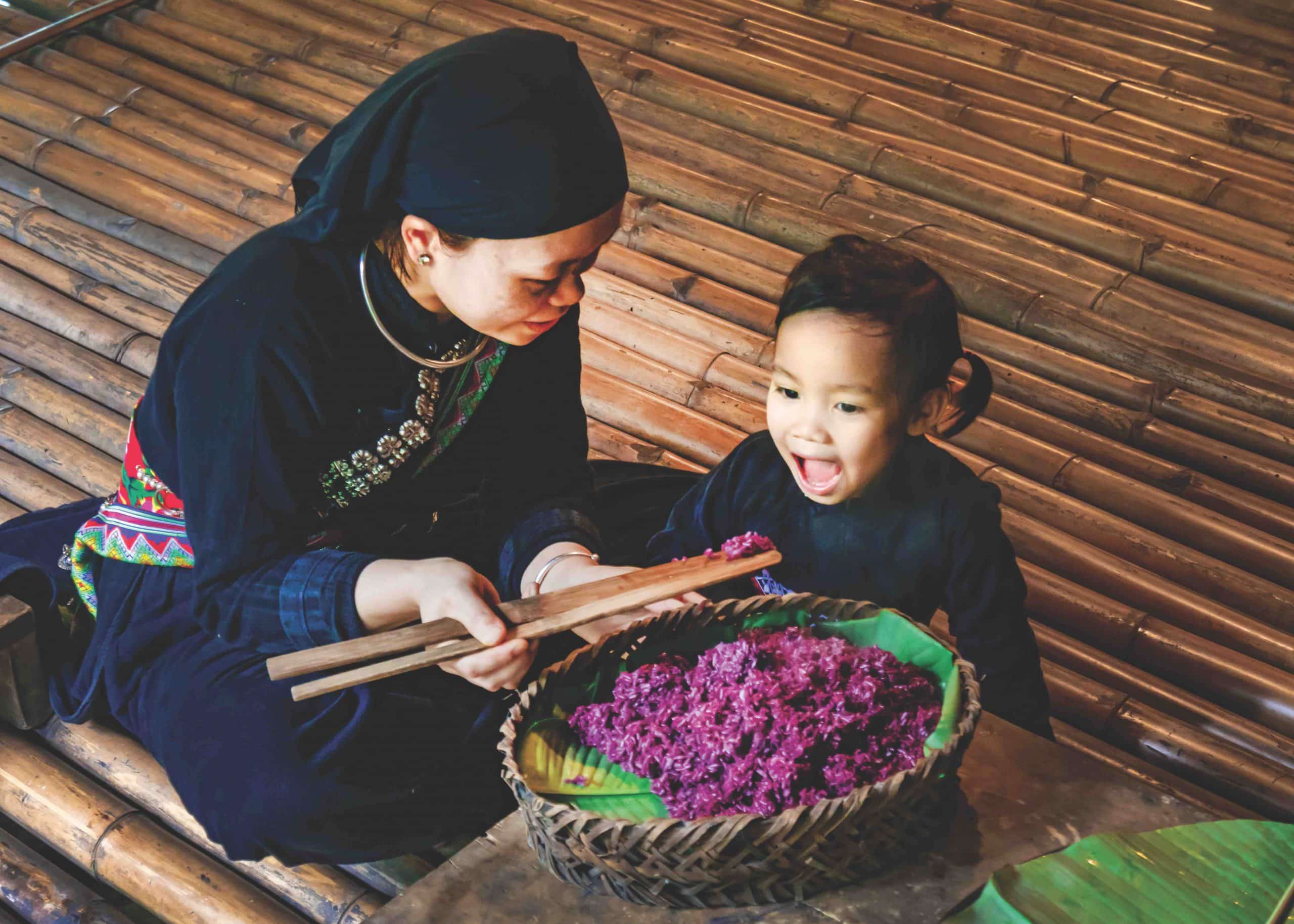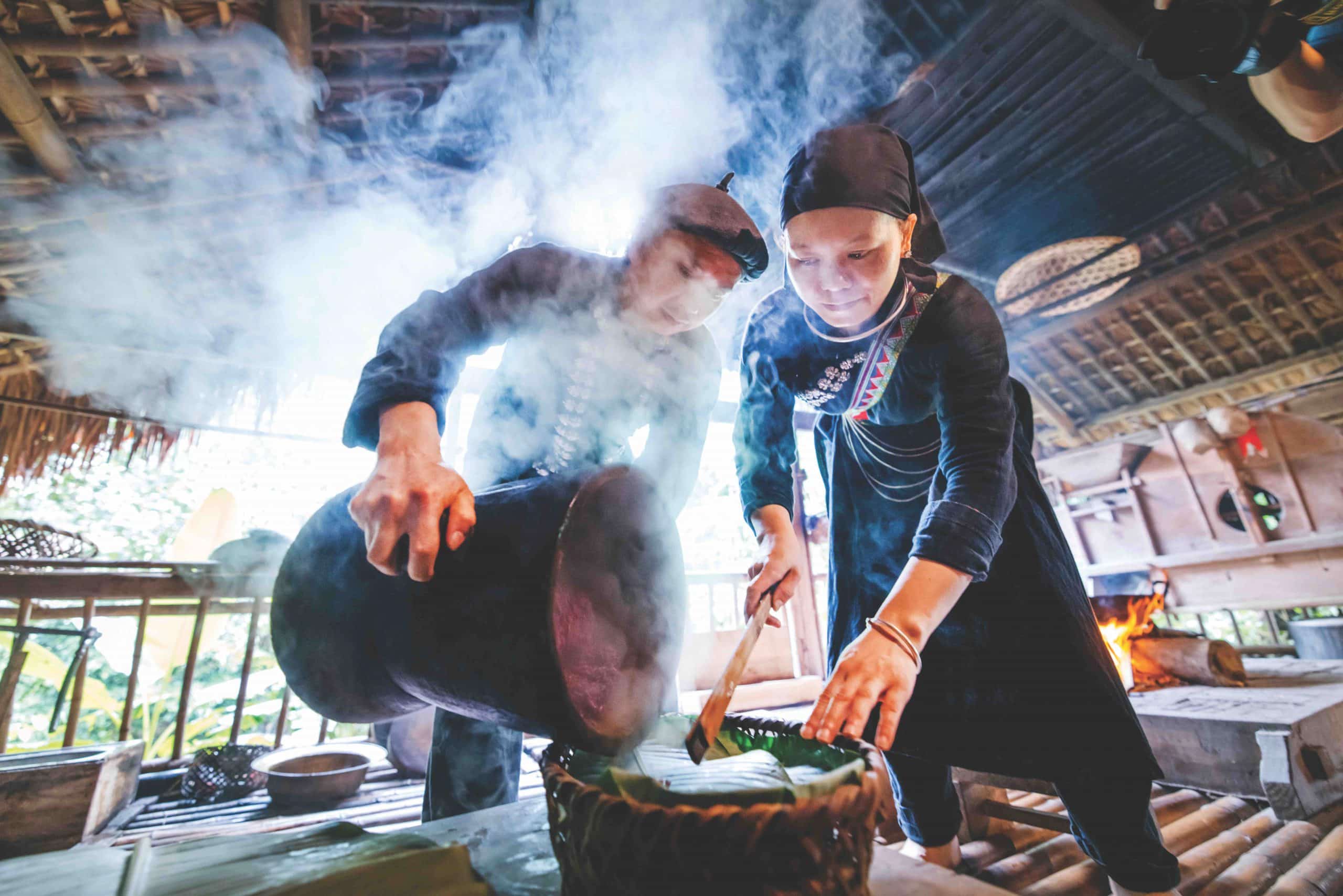Story: Truong Quy
Photos: Heritage photo tour – Thai Nguyen 2024
In the past decade, growing numbers of global travel websites are praising Vietnam’s mountainous landscapes and traditional villages. Vietnamese people seem the most surprised by this attention, wondering: Can our homeland be so poetic and “classy”?
Less than 80km from Hanoi, the Thai Hai Reserve Area of Ecological Houses-on-Stilts Village (Thinh Duc Commune, Thai Nguyen City) presents a typical picture of life in an ethnic Tay community amidst forested mountains. Visitors often wonder how the locals became so talented.

Who dyed your dress so all I see is indigo?
It is not the province’s grand scenery, vast tea hills, or majestic rivers and waterfalls that have become the highlight of a visit to Thai Nguyen but this small village, which was honored by the World Tourism Organization (UNWTO) as “one of the 32 best tourism villages in the world in 2022”. To achieve this recognition, villages must meet nine complex criteria. Thai Hai heralds the beginning of an effort to develop tourism locally and nationwide, as last year, the flooded area of Tan Hoa in Quang Binh was also honored as “the best tourist village in the world”.
Located in a 25-hectare valley, surrounded by hills and an ecological lake, Thai Hai started out as a small settlement with only a dozen houses. In the early 2000s, an ethnic Tay woman named Ms. Nguyen Thi Thanh Hai saw that people were dismantling some 80-year-old stilt houses to build new brick houses in the Dinh Hoa Safety Zone, a former resistance base against the French colonial regime. Ms. Thanh Hai bought 30 stilt houses and reassembled them in Thai Hai. More people came to settle in Thai Hai from various regions, since Thai Nguyen used to be remote and isolated.
More than 80 years ago, the poet Nguyen Binh wandered through Thai Nguyen and wrote these exquisite lines:
Who dyed the grassy hills so green?
Who dyed your dress so all I see is indigo?
Who dyed the sky so blue?
Who dyed our love, who made it fade? (Vì ai)
and
The high pass makes the stream hesitate.
Sunlight gently shines, the afternoon lingers…
Rose myrtle hills snuggle with the tea fields.
White smoke from the mountains, who’s wearing that blue shirt? (Đường rừng chiều)
Today, the grassy hills remain green, the indigo dresses still stand out in the tea fields, and the girls’ eyes remain dreamy under their graceful scarves. But Thai Hai does not evoke the loneliness of these old poems. Nearly 200 “community members”, as they call themselves, “share the same pot of rice, share the same pocket of money,” as they work together in this ecological space, which reminds us of an ideal cooperative.

So many soothing details
If you’re looking for a resort-style getaway, Thai Hai is not designed that way. Here, the stilt houses retain their traditional structure, equipped with some amenities to meet the needs of visitors, but more importantly, surrounded by green spaces that are carefully tended while maintaining a rustic charm. A toothbrush tree hedge taller than a person reveals a surprising arched gateway that leads to a well, built of stone slabs where the water is always full to the brim.
Young women carried water pipes made from large sections of bamboo while Ms. Le Thi Nga, deputy head of the village, instructed our group to wash our faces before entering the village. The sound of “Then” singing echoed, making us feel that we were part of a live stage performance.
Delicate details are arranged to delight visitors’ eyes as they stroll along small paths: Wooden signs with the homeowners’ names are engraved with phrases like “Lượn Ke Liên” (Mrs. Lien’s house), “Lượn A Nga” (Ms. Nga’s house), or “Lượn Ka Hải” (Mr. Hai’s house), placed on columns beside the toothbrush tree hedge, pointing to the stairs leading up to each stilt house. Drinks are served on seats made from tree trunks or woven rattan chairs upstairs, arranged next to the kitchen area, which is tucked in the corner of the house, where the fire stays warm. The livestock area is concentrated in a separate zone. Hence, the ground floor of the stilt houses now serve as display areas for handicrafts, medicinal herbs, or dried foods that can be purchased as gifts from this forest region, such as Tan Cuong green tea, bamboo shoots, vermicelli, wood ear mushrooms, shiitake mushrooms, honey, etc. Everything is simple, like the little brocade bags or colorful tassels, which resemble distant flowers blooming amidst the humble indigo, green, and brown background.

Young women return, leaving the streams longing
In addition to being used as residences, some houses serve as production workshops for processing tea and traditional medicine, making che lam (sticky rice ginger peanut bars), distilling liquor, and weaving. Visitors can sample products made on-site in these small workshops, buy them as gifts, or even try weaving egg baskets or making a batch of cakes with the locals.
What piques most guests’ curiosity is the communal dining. The dining area consists of two large leaf-roofed buildings that can serve the entire village and all visitors at the same time. While the dishes are not overly elaborate, they are well-seasoned, ranging from sour fish soup, boiled chicken, roasted pork, khâu nhục (a type of braised pork belly), to forest vegetables like sauteed bò khai (Erythropalum scandens) vegetables with garlic, fern salad, and especially, the eye-catching and delicious xôi trám (sticky rice with black canarium) and Vietnamese magenta sticky rice.
We were especially struck by the bright and radiant faces of the villagers, from the elderly women with their pure beauty to the chubby children who seem to have walked out of paintings. Faced with Ms. Le Thi Nga, a former preschool teacher and graceful beauty who now guides visitors with captivating narration, to the ever-smiling villagers, I had to ask my companions: “Why is everyone so naturally beautiful?”
I also met some visiting German students working on cultural projects in Hanoi. The children of Thai Hai village are not shy, and quickly bonded with these foreign visitors and invited them to play games like ném còn (a traditional Vietnamese game) or soccer.
As evening fell, a misty veil covered the stilt houses, as in an old song:
Smoke rises from the stilt houses, the young women return, leaving the streams longing… (Nương chiều – Pham Duy)
Surely, many visitors depart with a deep longing for the mountains and forests.
9 Criteria for UNWTO’s Best Tourism Villages in the World
- Cultural and natural resources
- Promotion and conservation of cultural resources
- Economic sustainability
- Social sustainability
- Environmental sustainability
- Tourism development and value chain integration
- Governance and prioritization of tourism
- Infrastructure and connectivity
- Health, safety, and security










